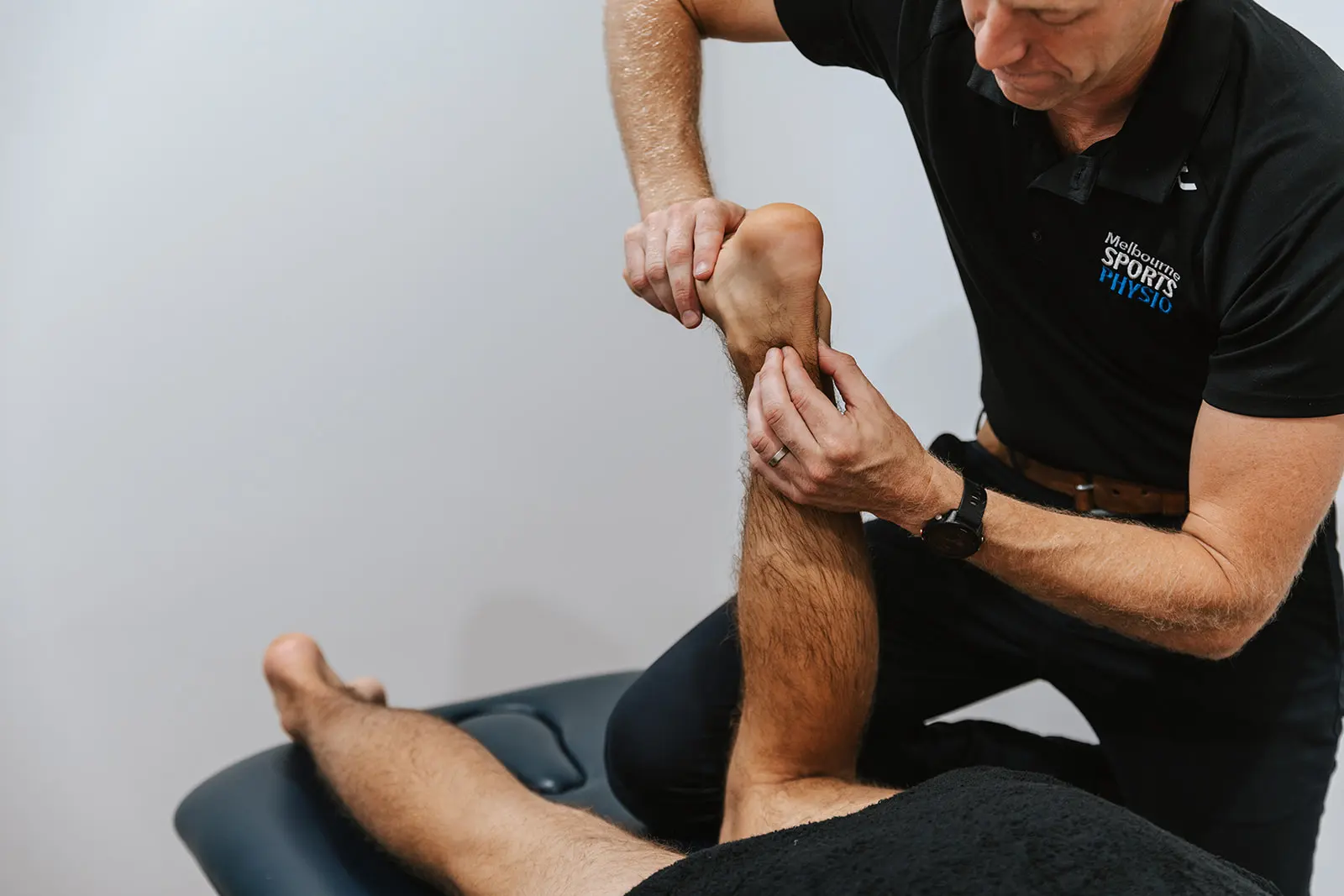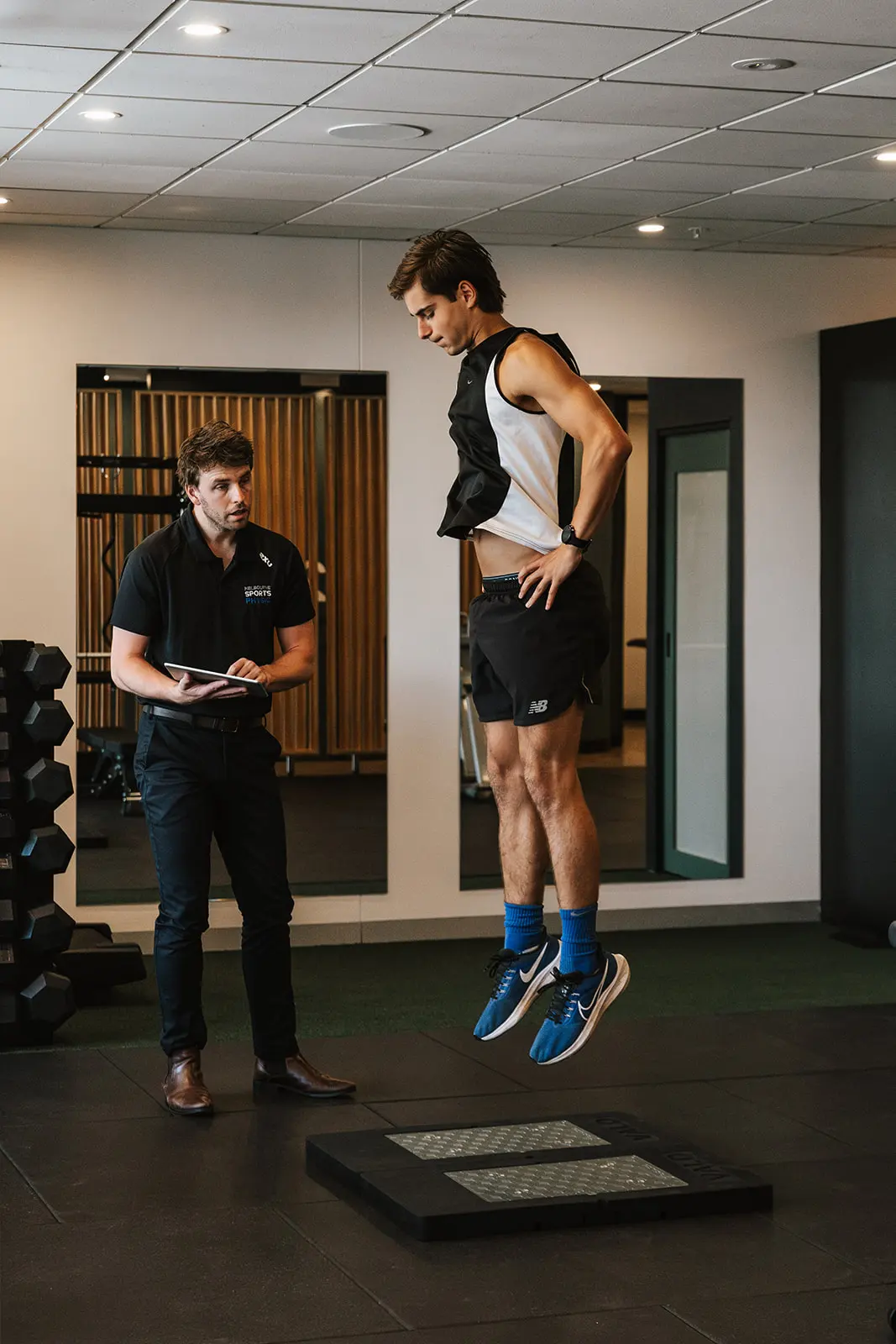An Achilles tendon rupture can be a significant setback — especially for active individuals.
Whether the injury occurred during sport or daily activity, the road to full recovery often involves surgery followed by a carefully structured rehabilitation plan.
In this guide, we’ll walk you through what to expect after Achilles tendon rupture repair, including the rehabilitation protocol, timeline, and exercises typically involved.
This article is tailored to the Australian private health landscape, so you’ll also get a sense of what your rehab journey might look like in that context.
Book Online Now to Fix Your Body
What Is the Normal Protocol After Achilles Tendon Rupture Repair?
Following surgical repair of the Achilles tendon, the body needs time to heal.
However, controlled movement and rehabilitation are just as important as rest. The typical post-operative protocol in Australia follows phased rehabilitation, progressing from protection and immobilisation to weight-bearing, and eventually to strengthening and return to sport or activity.
Your care team may include an orthopaedic surgeon, physiotherapist, and possibly a GP or sports physician — especially if you're managing private health cover and looking to return to higher levels of activity.
What our clients are saying about us
When Do I Start Rehabilitation After Achilles Tendon Repair?
Rehabilitation usually begins in the first week or two post-surgery, even while you're still using crutches and wearing a boot. Early rehab focuses on:
-
Maintaining circulation and reducing swelling
-
Activating nearby muscles like the quadriceps and glutes
-
Gentle range-of-motion exercises, depending on your surgeon’s protocol
Your physiotherapist will typically coordinate closely with your surgeon, especially in a private setting, to personalise your program and avoid stressing the repaired tendon too early.
What Is the Normal Timeline After Achilles Tendon Rupture Repair?
Recovery from an Achilles tendon rupture is a long-term process that spans several months. Below is a general timeline — keep in mind that each patient’s progress will vary slightly.
|
Timeframe |
Milestones |
|
0–2 weeks |
Immobilisation, crutches, boot with foot pointed down (plantarflexion) |
|
2–6 weeks |
Begin partial weight-bearing with boot, early physio begins |
|
6–8 weeks |
Transition to full weight-bearing, start gentle ankle movement |
|
8–12 weeks |
Boot removal, begin strengthening exercises, focus on walking normally |
|
3–6 months |
Improve strength, balance, and gait; introduce low-impact activity |
|
6–12 months |
Return to sport or higher-level activity, depending on goals and progress |
What Are Normal Exercises After Achilles Tendon Repair?
Rehabilitation exercises are introduced in stages and are designed to gradually restore mobility, strength, and function. Here's what you can typically expect:
Early Stage Exercises (Weeks 2–6)
-
Toe wiggling and foot pumps (in boot)
-
Isometric contractions of the calf and thigh muscles
-
Glute bridges and core activation
-
Gentle range-of-motion exercises (as guided)
Mid-Stage Exercises (Weeks 6–12)
-
Seated heel raises
-
Ankle mobility drills
-
Band-resisted foot exercises
-
Bodyweight squats and balance drills
-
Gait retraining
Book Online Now to Fix Your Body
Advanced Stage Exercises (3–6+ months)
-
Standing heel raises (double then single-leg)
-
Step-ups and lunges
-
Proprioception and balance work (e.g. wobble board)
-
Treadmill walking and eventually jogging
-
Plyometric or sport-specific drills (when cleared)
It’s important not to rush this process. Re-rupture is rare, but more common if a patient returns to high-level activity before the tendon has fully healed and regained strength.
Post-Operative Rehabilitation After an Achilles Tendon Rupture Repair
Let’s break the rehabilitation process down into three clear phases: short term, medium term, and long term.
Short Term (0–6 Weeks Post-Surgery)
Goals:
-
Protect the tendon
-
Minimise swelling
-
Begin gentle movement
What’s involved:
-
Use of a moon boot and crutches
-
Elevation and ice to manage swelling
-
Basic exercises like foot pumps, glute activation, and gentle range of motion (as advised)
-
Physiotherapy support may begin around Week 2, with regular check-ins
Access to a physiotherapist early can also help to manage pain and prevent compensatory issues in the hips or lower back.
Medium Term (6–12 Weeks Post-Surgery)
Goals:
-
Regain movement and mobility
-
Transition from boot to normal footwear
-
Begin strengthening
What’s involved:
-
Gradual removal of heel wedges
-
Boot removed (usually around 8-12 weeks pending your surgeons specific instructions)
-
Begin weight-bearing out of the boot
-
Introduction of strength and balance exercises
-
Gait retraining to normalise walking pattern
Your physiotherapist will monitor your progress closely and adjust your exercises accordingly. Access to a gym or clinic-based rehab facility can be very helpful during this stage.
Book Online Now to Fix Your Body
Long Term (3–12+ Months Post-Surgery)
Goals:
-
Restore full strength
-
Improve coordination and agility
-
Return to sport or demanding physical tasks
What’s involved:
-
Progressive loading of the calf and Achilles tendon
-
Sport-specific or work-specific drills
-
Plyometrics (jumping, hopping)
-
Running and change-of-direction training (as appropriate)
Most patients return to recreational activity between 6–9 months, with full return to sport usually between 9–12 months.
Book Online Now to Fix Your Body
Final Thoughts
Recovering from an Achilles tendon rupture is a gradual process that requires patience, consistency, and professional guidance. While the first few weeks can feel slow, each phase of rehabilitation plays a crucial role in helping you regain strength, prevent re-injury, and return to the activities you enjoy.
Whether you're an athlete, a tradie, or simply want to walk pain-free again, following a structured, personalised rehab plan gives you the best chance at a full recovery.
Book online to feel great & move well again!
Super Simple with Instant Confirmation & No Login Required!
For consultation fees and more information, please visit our Fees and FAQs page or call us on 03 9498 0205.
Some types of consultations may require pre-payment or a deposit. 100% Money Back Guarantee (T&Cs apply).
Learn how our Melbourne Sports Physio Team can help you?
At Melbourne Sports Physiotherapy our goal is to get you moving pain free as soon as possible.
But, we also want you to actually move better and live a healthier, more active and fulfilling life!
If your sports, fitness training or work has been wearing your body down, book in with one of our expert massage therapists so we can help you reduce your pain or stiffness.
If you are showing some signs of this condition or simply want help prevent this from happening in the future then book in with one of our highly experienced Remedial Massage Therapists today!
You can make an appointment by calling or booking online.



